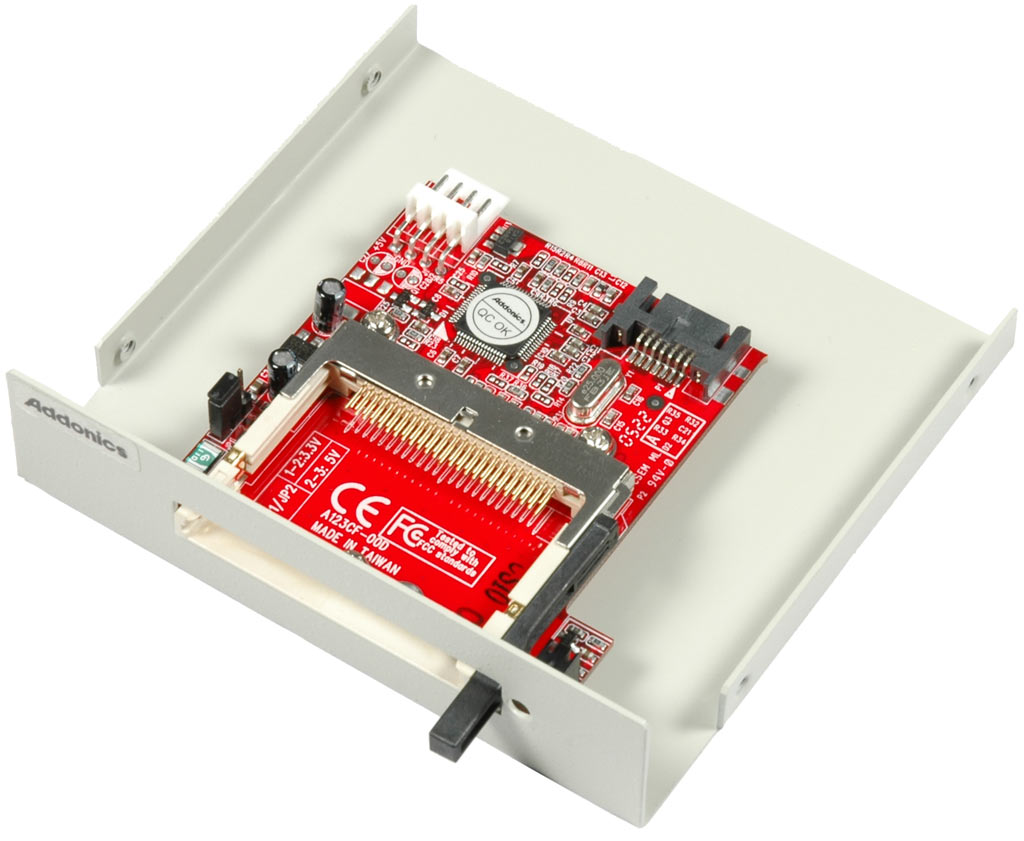Roundup: CompactFlash Cards For Professionals
Comparison Table, Test Setup, Card Reader
| Manufacturer | Kingston | Lexar | Lexar | PNY |
|---|---|---|---|---|
| Family | Ultimate | Platinum II | Professional UDMA | Optima Pro Ultra High Speed |
| Model Number | CF/16GB-U2 | Row 1 - Cell 2 | Row 1 - Cell 3 | P-CF8GB-266W-DVDC |
| Capacity | 16 GB | 16 GB | 16 GB | 8 GB |
| Rated Performance | 266x | 80x | 300x | 266x |
| Flash Memory Type | SLC | - | - | - |
| Form Factor | CF | CF | CF | CF |
| Manufacturer | Sandisk | Silicon Power | Transcend | Transcend |
|---|---|---|---|---|
| Family | Extreme Ducati Edition | 300X Professional | Extreme Speed | Ultra Speed |
| Model Number | SDCFX4-008G-AD1 | SP032GBCFC300V10 | TS8GCF300 | TS32GCF133 |
| Capacity | 8 GB | 32 GB | 8 GB | 32 GB |
| Rated Performance | 300x | 300x | 300x | 133x |
| Flash Memory Type | - | - | SLC | MLC |
| Form Factor | CF | CF | CF | CF |
Test Setup
| System Hardware | |
|---|---|
| Processor(s) | 2x Intel Xeon Processor (Nocona core)3.6 GHz, FSB800, 1 MB L2 Cache |
| Platrform | Asus NCL-DS (Socket 604)Intel E7520 Chipset, BIOS 1005 |
| RAM | Corsair CM72DD512AR-400 (DDR2-400 ECC, reg.), 2x 512 MB, CL3-3-3-10 Timings |
| System Hard Drive | Western Digital Caviar WD1200JB120 GB, 7,200 RPM, 8 MB Cache, UltraATA/100 |
| Mass Storage Controller(s) | Intel 82801EB UltraATA/100 Controller (ICH5) |
| Compact Flash | Addonics ADSACFW SATA |
| Secure Digital HC | Transcend M5 USB |
| Networking | Broadcom BCM5721 On-Board Gigabit Ethernet NIC |
| Graphics Subsystem | On-Board GraphicsATI RageXL, 8 MB |
| System Hardware | |
|---|---|
| Performance Measurements | c't h2benchw 3.6 |
| I/O Performance | IOMeter 2003.05.10Fileserver-Benchmark, Web server-Benchmark, Workstation-Benchmark |
| System Software and drivers | |
|---|---|
| OS | Microsoft Windows Server 2003 Enterprise Edition, Service Pack 1 |
| Platform Driver | Intel Chipset Installation Utility 7.0.0.1025 |
| Graphics Driver | Default Windows Graphics Driver |
Card Reader: Addonics ADSACFW
Since USB 2.0 card readers aren’t fast enough to support the high throughput of the tested CompactFlash cards, we decided to use a reader device that is based on a SATA interface. USB 2.0 devices typically max out at a bit more than 30 MB/s, while this device supports SATA 1.0a at 150 MB/s. Even though fast hard drives and flash SSDs are faster than this, the bandwidth is enough to test CompactFlash cards, which reached up to 47 MB/s in our tests (for the Kingston Ultimate).
The device, an Addonics ADSACFW, comes installed into a 3.5” drive bay, but Addonics also adds standard and low profile slot covers, which means that the reader can also be installed at the rear of your PC. Of course, it can be hooked up to SATA/300 controllers, it supports hot swapping, and you can boot from CF cards as well. Hot swapping, however, requires controller support.
Get Tom's Hardware's best news and in-depth reviews, straight to your inbox.
Current page: Comparison Table, Test Setup, Card Reader
Prev Page Transcend Extreme Speed 300X (8 GB), Ultra Speed 133X (32 GB) Next Page Benchmarks: Access Time, I/O Performance